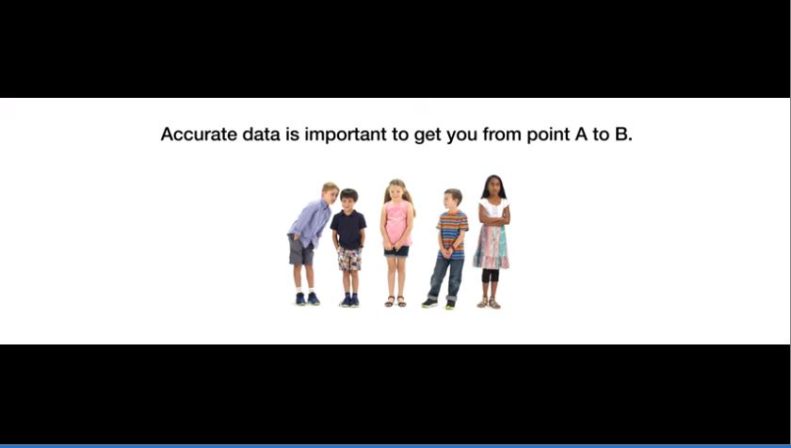
Confirming quality in data is more than a game of telephone
As you just observed, even one slight change in information can entirely change the outcome. In the aviation industry, we must all stay vigilant to ensure the information we pass to one another – both in data and in communications, maintains its quality from start to finish.
At Jeppesen, we pursue quality in everything we do by ensuring we not only have the best team with the best skills, but that we constantly look for ways to innovate and add new layers of quality assurance. As technology changes and allows for new ways to receive, use, and display navigation information, Jeppesen has continued to focus on improving our industry leading high quality.
I would like to give you a behind-the-scene look into one method we use to ensure quality in our terminal charting product.
Prior to 2015
Historically, when navigation charts were printed in paper, reviews of paper manuals confirming revision activity occurred manually. Spot checks of printed copies allowed for validation and confirmation of product availability before mailing to customers. As new methods for delivering charting content were introduced through early versions of mobile devices, data quality confirmation also improved.
Beginning 2015
On mobile devices, Jeppesen performs manual image rendering checks on iOS and Windows devices confirming quality of image before usage by customers. This check assures that charting images in FliteDeck Pro are being properly displayed for customer use. As customer adoption to mobile solutions continued to grow, Jeppesen needed to once again adapt to ensure quality in our products.
2018 and beyond Welcome to Data Validation Automated Testing for FD Pro
Through the creation of a mobile device lab, the first automated testing of data capability in FliteDeck Pro has begun. This lab automatically confirms rendering of new and revised terminal charting images validating images are available on the effective date of data set. Additionally, these tests validate Enroute NavData is current and rendering within the application. With this system we are able to process 18 images a minute through the lab using FliteDeck Pro on iOS and surface devices. Reports provide monitoring of outcome for each automated test and rapidly identify any discrepancies for quick response and correction if needed.
The future of Automated Testing
With the testing lab framework and orchestration established, scaling for additional types of data checks and additional mobile applications will provide a comfort level for all customers to be assured the charting data being delivered will be reliably available on their application when they need it. Long term concepts will focus on introducing automated content checks for Original Equipment Manufacturers and performing similar validation activities.
Focusing on quality is a passion of everyone at Jeppesen. Together we strive to deliver the most accurate and reliable navigation products and capabilities for customers.
As you just observed, even one slight change in information can entirely change the outcome. In the aviation industry, we must all stay vigilant to ensure the information we pass to one another – both in data and in communications, maintains its quality from start to finish.
At Jeppesen, we pursue quality in everything we do by ensuring we not only have the best team with the best skills, but that we constantly look for ways to innovate and add new layers of quality assurance. As technology changes and allows for new ways to receive, use, and display navigation information, Jeppesen has continued to focus on improving our industry leading high quality.
I would like to give you a behind-the-scene look into one method we use to ensure quality in our terminal charting product.
Prior to 2015
Historically, when navigation charts were printed in paper, reviews of paper manuals confirming revision activity occurred manually. Spot checks of printed copies allowed for validation and confirmation of product availability before mailing to customers. As new methods for delivering charting content were introduced through early versions of mobile devices, data quality confirmation also improved.
Beginning 2015
On mobile devices, Jeppesen performs manual image rendering checks on iOS and Windows devices confirming quality of image before usage by customers. This check assures that charting images in FliteDeck Pro are being properly displayed for customer use. As customer adoption to mobile solutions continued to grow, Jeppesen needed to once again adapt to ensure quality in our products.
2018 and beyond Welcome to Data Validation Automated Testing for FD Pro
Through the creation of a mobile device lab, the first automated testing of data capability in FliteDeck Pro has begun. This lab automatically confirms rendering of new and revised terminal charting images validating images are available on the effective date of data set. Additionally, these tests validate Enroute NavData is current and rendering within the application. With this system we are able to process 18 images a minute through the lab using FliteDeck Pro on iOS and surface devices. Reports provide monitoring of outcome for each automated test and rapidly identify any discrepancies for quick response and correction if needed.
The future of Automated Testing
With the testing lab framework and orchestration established, scaling for additional types of data checks and additional mobile applications will provide a comfort level for all customers to be assured the charting data being delivered will be reliably available on their application when they need it. Long term concepts will focus on introducing automated content checks for Original Equipment Manufacturers and performing similar validation activities.
Focusing on quality is a passion of everyone at Jeppesen. Together we strive to deliver the most accurate and reliable navigation products and capabilities for customers.
